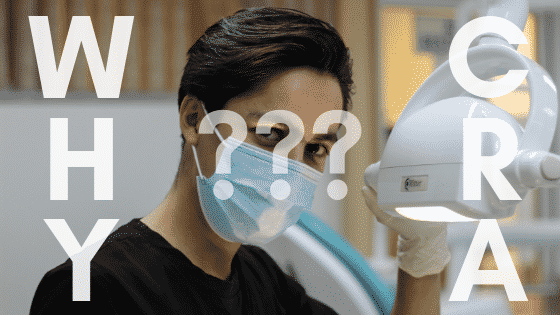Is there still demand for Clinical Research Associates (CRAs)

The Demand for Clinical Research Associates is growing, survey says. The big question is Why???
A recent survey of First Clinical says that for the first year since 2007 the median demand for CRO staff in USA (mainly for CRAs) increased by 10% in 2015, and the median supply declined by 5%.
See http://www.firstclinical.com/journal/2016/1605_Climate_2016.pdf
At the 2015 DIA conference on June 14-18, 2015 Lisa Feeney, MBA, reported that there are at least 10,000 open CRA positions in the United States as of June 2015. It is not clear where this number comes from but different reports in Canada also claim over 30% shortage of qualified staff, in some provinces even over 40%.
What is the reason for this shortage?
The article 2.8 of ICH E6 (GCP) specifies that “Each individual involved in conducting a trial should be qualified by education, training, and experience to perform his or her respective task(s)”. FDA requires the same in Title 21 CFR 312.53(d) Selecting monitors: “A sponsor shall select a monitor qualified by training and experience to monitor the progress of the investigation”.
None of these regulations specifies neither the nature of training nor the duration of the experience. While the training doesn’t seem to be an imperative requirement, in N.America the “hands-on” experience is considered as much more relevant and has become the main hiring criterion.
As most clinical trials are conducted first in the biggest market, eg. in the USA, and under the US regulations, and as a big part of Sponsors are American, this may be the reason why this requirement was adopted almost universally.
Why “2 years of experience” even for “entry-level positions”?
Everything in clinical trials is strictly regulated by laws, regulations and detailed companies’ SOPs, which are largely implemented by using checklists. They guarantee a very good quality of the generated data and compliant procedures without extensive training or years of apprenticeship. The 2-years requirement seems to be a random one, and its origin is unclear.
One could speculate that HR staff and recruiters, who make the pre-selection of candidates, are not necessarily specialists in the field to understand and evaluate the relevance of the transferable applicant’s skill set. They can judge potential applicants on a significant degree only on the duration of their experience in exactly the same tasks as those required for the given job. However, why the two years threshold has been selected for candidates with university diplomas working with checklists in order not to miss anything still remains unclear.
A reasonable hypothesis would be that this happened gradually when CROs presented their bids and tried to beat the competitors by offering more qualified monitors as a guarantee for good quality of work. The financial stakes in a clinical trial are huge, and it is understandable that sponsors want to protect their backs. Some CROs have even specialized in offering and recruiting only monitors with 3 years experience.
What does that give?
The requirement for 2 years prior experience makes a nice vicious circle, Catch 22 type and generates a huge shortage of new staff. Only people who already work in the field, and therefore have “hands-on” experience, are solicited by recruiters and accepted by employers.
This increases a lot the workforce turnover and reduces substantially the efficiency of clinical trial sponsors and contract research organizations (CROs). They find themselves in a constant recruitment process for qualified CRAs in this hyper-competitive job market.
CWWeekly Article from March 2016 calls the industry-wide practice of requiring 2 years’ experience before assigning Monitors to clinical trials a “Major Issue” contributing to CRA shortage
Why continue requiring 2 years of experience?
The Association of Clinical Research Professionals (ACRP) calls in a recent paper for the elimination of the commonly accepted and widely practiced two-years experience requirement for entry-level CRAs in favour of competence-based employment practices.
See http://www.acrpnet.org/PDF/ACR_CRA_Workforce_F.pdf
What is the solution for the moment?
Internships may provide a solution to this problem, but they are very rare. First of all, it seems that Sponsors are leery to invest in training new staff members that may leave some 6-9 months later because already considered qualified and solicited every week by recruiters.
Second, an important issue is liability insurance against professional errors and omissions. CROs are reluctant to risk their group insurance with inexperienced monitors. And for an individual without substantial revenues, to buy liability insurance is expensive (minimum $5000). The contract CRAs must incorporate themselves and have at least 3 years documented full-time work experience to allow the insurance company evaluating the level of risk that they represent. Becoming an independent CRA is not for beginners.
Some educational programs offer workshops on the basic clinical trials related tasks, but they are of short duration and the industry traditionally evaluates the candidates’ experience by its duration. The CRA School in Montreal seems to be the only provider that offers an unlimited internship but on studies done in the past. As there is no risk to affect the study results, there is no need of having liability insurance. The same tasks are performed like in an on-going study.
Whether an internship is paid or not, the accumulated experience is valid because the interns perform the same tasks. Yes, there is more guidance and the responsibilities are at a lower level, but it helps to secure the application of the fundamental concepts, which are critical for success and understanding better the real-world scenarios, which are part of the day-to-day work.
Currently a big part of the study costs are related to monitoring (over 30% in phase III) and risk-based monitoring strategies don’t seem to manage to reduce these costs. As long as the industry doesn’t change their ways, this seems to be the only available road to bring new staff in the clinical research industry and guarantee the good quality of their work. Otherwise, the shortage of staff will continue its growth.

Workshops
405 Avenue Ogilvy, unit #101
Montreal, QC, Canada H3N 1M3
(legal address, no admission)
Contact Us
info@cra-school.com
Information : +1 (514) 534-0273
Support 7/7 : +1 (514) 257-3003
By Skype: CRA School Montreal
- © 2009 - 2024 CRA-School - International, All Rights Reserved.


0 Comments